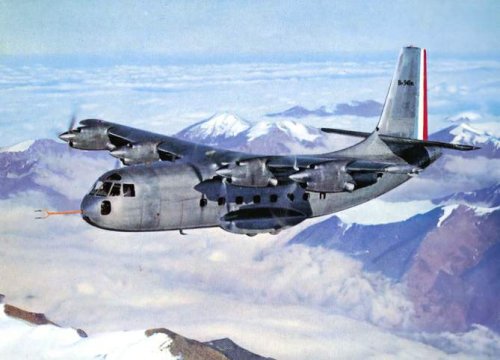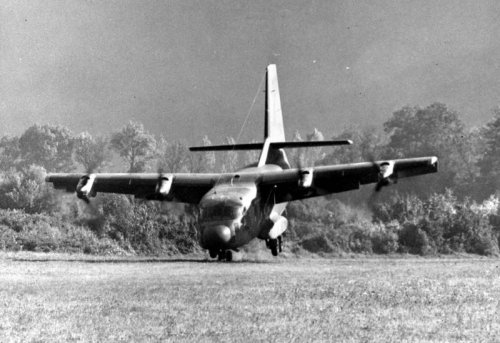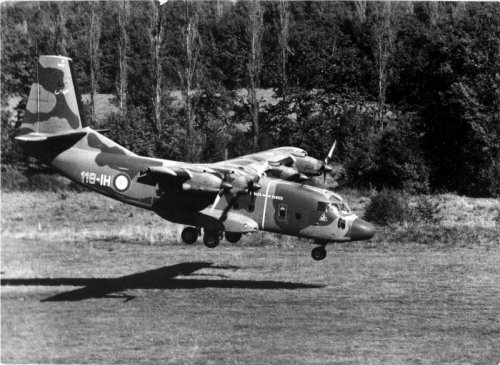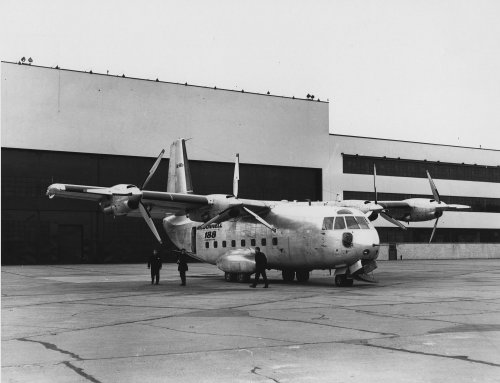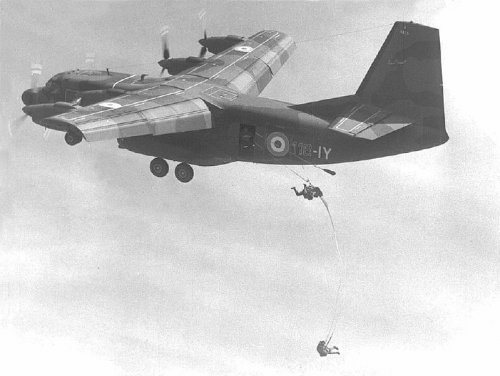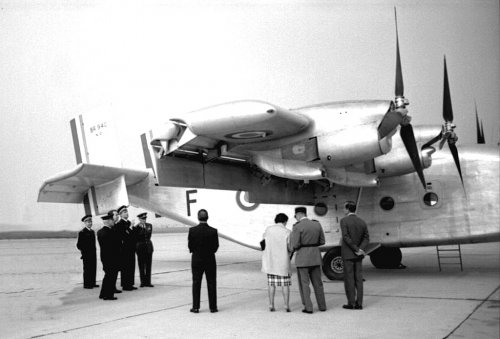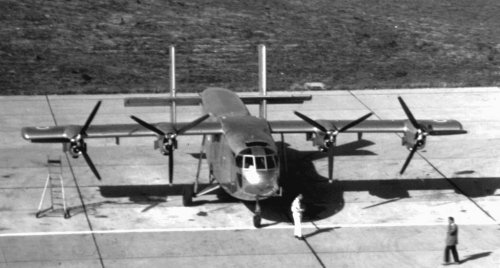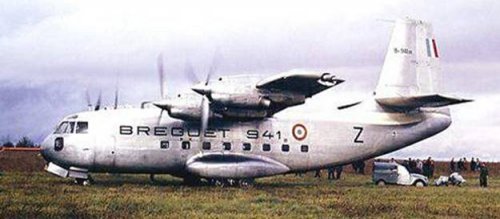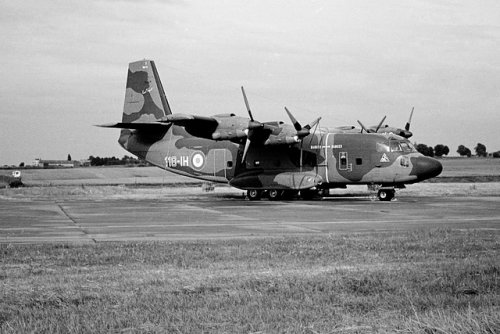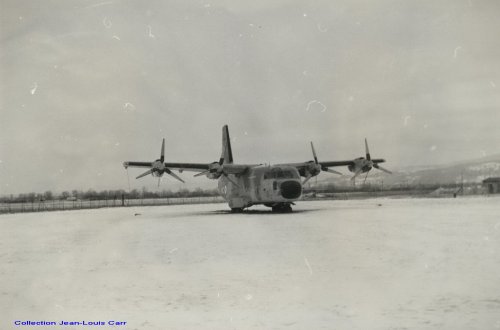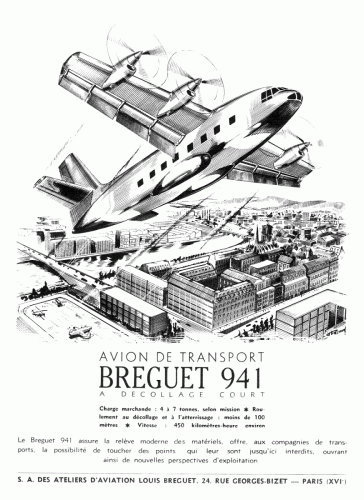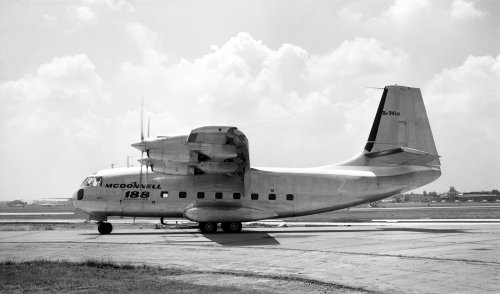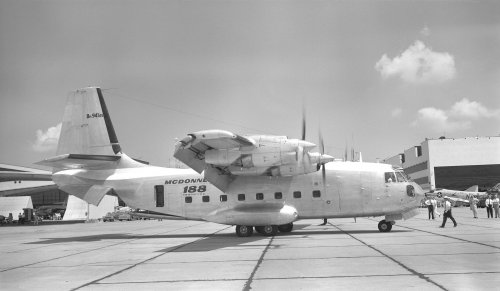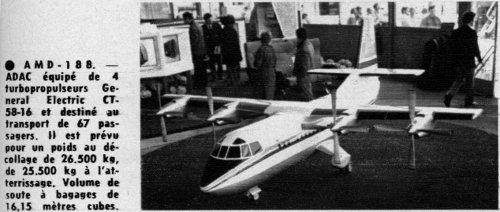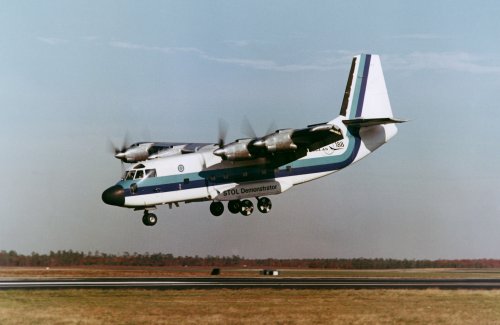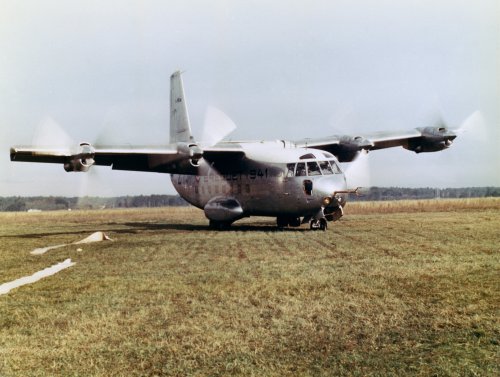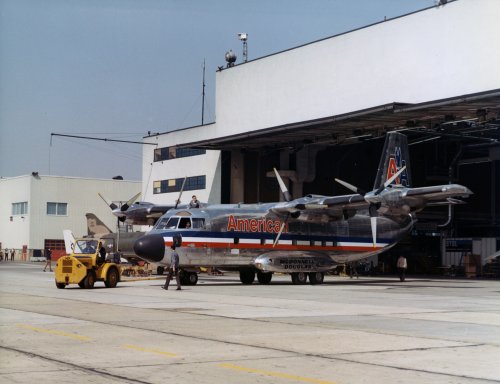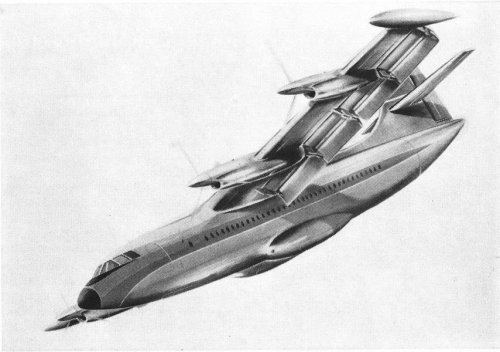You are using an out of date browser. It may not display this or other websites correctly.
You should upgrade or use an alternative browser.
You should upgrade or use an alternative browser.
Breguet 941 STOL and Related Projects
- Thread starter hesham
- Start date
- Joined
- 21 May 2006
- Messages
- 3,000
- Reaction score
- 2,263
Re: Breguet 941 VTOL and related projects
I would really like to see (read) what the U.S. military thoughts were on the Br.941!!
Does anyone know what time frame that the U.S. military evaluated the Br.941???
Regards
Pioneer
Stargazer2006 said:And let's not forget that the Breguet 941 was marketed in the U.S. as the McDonnell 188 (Model 188-E), was evaluated by both NASA and the U.S. military...
I would really like to see (read) what the U.S. military thoughts were on the Br.941!!
Does anyone know what time frame that the U.S. military evaluated the Br.941???
Regards
Pioneer
- Joined
- 11 March 2006
- Messages
- 8,623
- Reaction score
- 3,785
With regards to Jean Cuny "Les Avions Breguet", Docavia, the Br.941 was offered to US military
twice: At first to the USAF as MDC 188E in 1963 - 64. And then to the US Army as MDC 941 in
1969 -70. About an evaluation by the USAF or US Army, I could find nothing in this book.
twice: At first to the USAF as MDC 188E in 1963 - 64. And then to the US Army as MDC 941 in
1969 -70. About an evaluation by the USAF or US Army, I could find nothing in this book.
Photos of McDonnell 188 from San Diego Air & Space Museum Archive.
Source:
http://www.flickr.com/photos/sdasmarchives/4589913519/in/photostream/
http://www.flickr.com/photos/sdasmarchives/4590533068/in/photostream/
http://www.flickr.com/photos/sdasmarchives/4589913205/in/photostream/
http://www.flickr.com/photos/sdasmarchives/4590532650/sizes/o/in/photostream/
http://www.flickr.com/photos/sdasmarchives/4589912993/in/photostream/
http://www.flickr.com/photos/sdasmarchives/4589912925/in/photostream/
http://www.flickr.com/photos/sdasmarchives/4590532140/in/photostream/
http://www.flickr.com/photos/sdasmarchives/4589912695/in/photostream/
Source:
http://www.flickr.com/photos/sdasmarchives/4589913519/in/photostream/
http://www.flickr.com/photos/sdasmarchives/4590533068/in/photostream/
http://www.flickr.com/photos/sdasmarchives/4589913205/in/photostream/
http://www.flickr.com/photos/sdasmarchives/4590532650/sizes/o/in/photostream/
http://www.flickr.com/photos/sdasmarchives/4589912993/in/photostream/
http://www.flickr.com/photos/sdasmarchives/4589912925/in/photostream/
http://www.flickr.com/photos/sdasmarchives/4590532140/in/photostream/
http://www.flickr.com/photos/sdasmarchives/4589912695/in/photostream/
Attachments
-
 4589913519_4a377011df_o.jpg34.2 KB · Views: 95
4589913519_4a377011df_o.jpg34.2 KB · Views: 95 -
 4589912695_b58dcf4b52_o.jpg22.9 KB · Views: 95
4589912695_b58dcf4b52_o.jpg22.9 KB · Views: 95 -
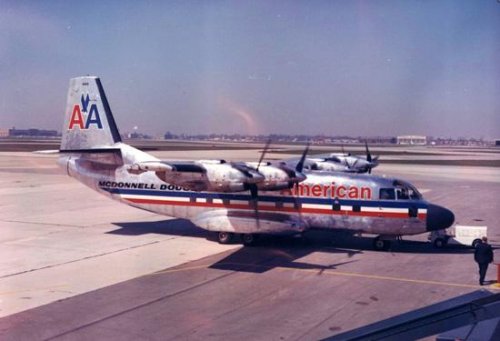 4590532140_a55ac45b5a_o.jpg27.7 KB · Views: 89
4590532140_a55ac45b5a_o.jpg27.7 KB · Views: 89 -
 4589912925_92fdc496cf_o.jpg22.7 KB · Views: 92
4589912925_92fdc496cf_o.jpg22.7 KB · Views: 92 -
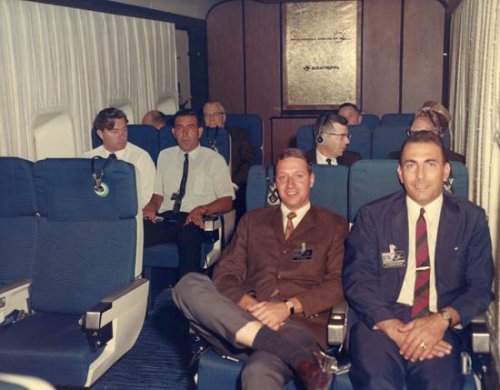 4589912993_af466e9d06_o.jpg38.4 KB · Views: 83
4589912993_af466e9d06_o.jpg38.4 KB · Views: 83 -
 4590532650_f35e241d00_o.jpg51.5 KB · Views: 79
4590532650_f35e241d00_o.jpg51.5 KB · Views: 79 -
 4589913205_b65f61e832_o.jpg53.5 KB · Views: 91
4589913205_b65f61e832_o.jpg53.5 KB · Views: 91 -
 4590533068_34e6d0ece0_o.jpg28.3 KB · Views: 91
4590533068_34e6d0ece0_o.jpg28.3 KB · Views: 91
Photos of Bréguet Br.941
Source:
http://antam.fr/Photos/
http://www.aile-b.com/affiches_aileb_50x70.php?link=2&PHPSESSID=93d0fb0067f83a7bd97fdd73363c2aaa
http://www.aeromovies.fr/articles.php?lng=en&pg=982
Source:
http://antam.fr/Photos/
http://www.aile-b.com/affiches_aileb_50x70.php?link=2&PHPSESSID=93d0fb0067f83a7bd97fdd73363c2aaa
http://www.aeromovies.fr/articles.php?lng=en&pg=982
Attachments
Source:
http://www.adspast.com/store/customer/product.php?productid=23090
http://www.adspast.com/store/customer/product.php?productid=22907
http://www.adspast.com/store/customer/product.php?productid=35555
http://www.aviationancestry.com/Misc/NonUK/NonUK-Breguet%20941-1963-1.html
http://www.flickr.com/photos/27862259@N02/5978910629/in/photostream/
http://www.adspast.com/store/customer/product.php?productid=54128
http://www.ebay.com/itm/1962-Breguet-941-945-STOL-Aircraft-Print-Ad-/190743879297?pt=LH_DefaultDomain_0&hash=item2c69389e81
http://www.flickr.com/photos/22963555@N05/2877013218/
http://www.adspast.com/store/customer/product.php?productid=23090
http://www.adspast.com/store/customer/product.php?productid=22907
http://www.adspast.com/store/customer/product.php?productid=35555
http://www.aviationancestry.com/Misc/NonUK/NonUK-Breguet%20941-1963-1.html
http://www.flickr.com/photos/27862259@N02/5978910629/in/photostream/
http://www.adspast.com/store/customer/product.php?productid=54128
http://www.ebay.com/itm/1962-Breguet-941-945-STOL-Aircraft-Print-Ad-/190743879297?pt=LH_DefaultDomain_0&hash=item2c69389e81
http://www.flickr.com/photos/22963555@N05/2877013218/
Attachments
-
 2877013218_041b9ddd4a.jpg76.5 KB · Views: 88
2877013218_041b9ddd4a.jpg76.5 KB · Views: 88 -
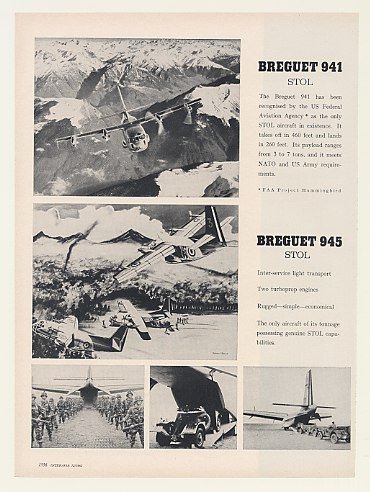 breguet62stol941945.jpg56.5 KB · Views: 89
breguet62stol941945.jpg56.5 KB · Views: 89 -
 breguet60aircraft941.jpg55.2 KB · Views: 85
breguet60aircraft941.jpg55.2 KB · Views: 85 -
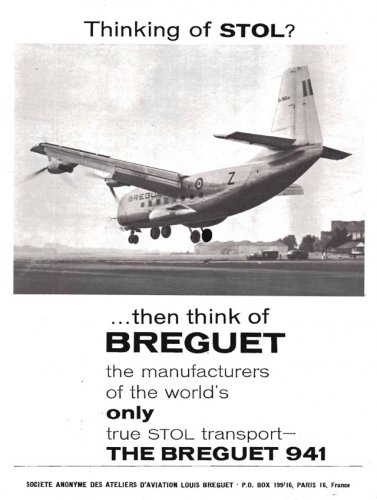 5978910629_a9be599d72_o.jpg102.7 KB · Views: 527
5978910629_a9be599d72_o.jpg102.7 KB · Views: 527 -
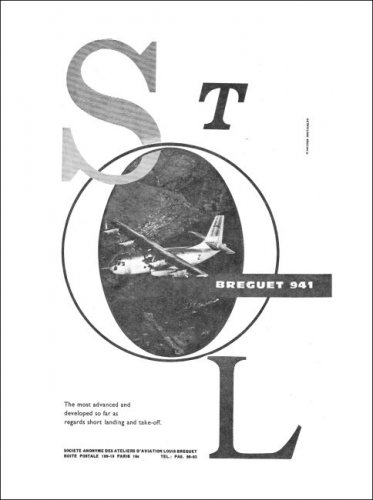 NonUK-Breguet 941-1963-1.jpg40.1 KB · Views: 539
NonUK-Breguet 941-1963-1.jpg40.1 KB · Views: 539 -
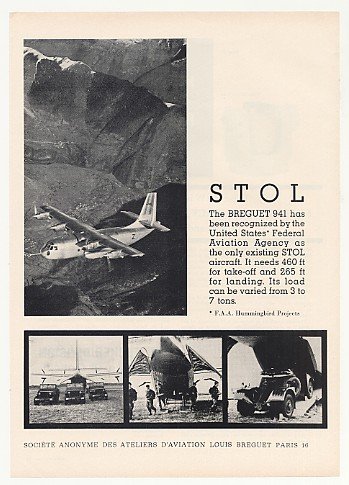 breguet62stol941.jpg51 KB · Views: 553
breguet62stol941.jpg51 KB · Views: 553 -
 breguet64stol941.jpg46.8 KB · Views: 577
breguet64stol941.jpg46.8 KB · Views: 577 -
 breguet67stol941.jpg50.7 KB · Views: 600
breguet67stol941.jpg50.7 KB · Views: 600
- Joined
- 13 June 2007
- Messages
- 2,173
- Reaction score
- 3,083
Greetings All -
Here's one more to add to the collection courtesy of the Greater St. Louis Air & Space Museum Archives.
We also have binder full of photos of the hard landing the 941 made while being demonstrated here in the U.S. Interesting details and one of these days I'll get around to scanning the photos.
Enjoy the Day! Mark
Here's one more to add to the collection courtesy of the Greater St. Louis Air & Space Museum Archives.
We also have binder full of photos of the hard landing the 941 made while being demonstrated here in the U.S. Interesting details and one of these days I'll get around to scanning the photos.
Enjoy the Day! Mark
Attachments
Source:
http://pics-aeronef.discutfree.com/t3377p130-un-p-tit-tour-au-c-e-v-dans-les-annees-50-60
http://www.ebay.com/itm/BREGUET-941-STOL-Transport-1963-ADVERT-Aircraft-AD-/390035968562
http://pics-aeronef.discutfree.com/t3377p130-un-p-tit-tour-au-c-e-v-dans-les-annees-50-60
http://www.ebay.com/itm/BREGUET-941-STOL-Transport-1963-ADVERT-Aircraft-AD-/390035968562
Attachments
Mark Nankivil said:We also have binder full of photos of the hard landing the 941 made while being demonstrated here in the U.S. Interesting details and one of these days I'll get around to scanning the photos.
Many thanks, Mark! Look forward to seeing them.
Source:
http://acam.asso.fr/histo/chrono_trains07.php
http://www.rcgroups.com/forums/showthread.php?t=752227&page=3
http://www.flickr.com/photos/my_public_domain_photos/5493932464/
http://forum.aviation-ancienne.fr/t4922p15-photos-oubliees
http://acam.asso.fr/histo/chrono_trains07.php
http://www.rcgroups.com/forums/showthread.php?t=752227&page=3
http://www.flickr.com/photos/my_public_domain_photos/5493932464/
http://forum.aviation-ancienne.fr/t4922p15-photos-oubliees
Attachments
- Joined
- 11 March 2006
- Messages
- 8,623
- Reaction score
- 3,785
Short Brothers & Harland might have manufactured the Breguet 941?
Source:
http://www.ebay.com/itm/BREGUET-941-AIRCRAFT-PLANE-ADVERT-MAGAZINE-CLIPPING-NOT-A-COPY-1960S-/160894242870?pt=UK_Collectables_Advertising_ET&hash=item25760b5036
Source:
http://www.ebay.com/itm/BREGUET-941-AIRCRAFT-PLANE-ADVERT-MAGAZINE-CLIPPING-NOT-A-COPY-1960S-/160894242870?pt=UK_Collectables_Advertising_ET&hash=item25760b5036
Attachments
- Joined
- 20 January 2007
- Messages
- 952
- Reaction score
- 1,139
Shorts licence (1962?), dubbed P.D.71, was in the context of RAF interest in field support of V/STOL strike operation. The outcome was firstly HS681 then C-130K. Lockheed tried a Boundary Layer Control BLC-130C (at Paris Show, 1961). The reason it all came to naught (apart from expense/maintainability) was that C-130E/H could get right up close and personal with dispersed strike craft. Cheaper, simpler DHC-7 took such civil market as could be generated from Innsbruck/Berne/Grenoble/Toronto Riverside (1980s: London City).
- Joined
- 4 May 2008
- Messages
- 2,439
- Reaction score
- 758
IIRC, the extreme nose down attitude displayed by the 941 on landing was not indicative of the actual flight path, that is, at low speeds and high CL the nose pointed down quite a bit but the actual glideslope was not as bad, it probably had a quite steep (but not uncommon for STOL) glideslope of 5-7 degrees.
- Joined
- 11 March 2006
- Messages
- 8,623
- Reaction score
- 3,785
I think, the Br.941 could do, what later became the "Sarajevo landing". Not as extreme in this video
http://www.youtube.com/watch?v=gc6s9fopyg8
( at 0:09 s), actually touching down with the nose wheel first, but with a very short flare, too (at about 0:30s, better at 0:45s)
http://www.youtube.com/watch?v=BrIOg0moJd4
http://www.youtube.com/watch?v=gc6s9fopyg8
( at 0:09 s), actually touching down with the nose wheel first, but with a very short flare, too (at about 0:30s, better at 0:45s)
http://www.youtube.com/watch?v=BrIOg0moJd4
- Joined
- 9 October 2009
- Messages
- 21,928
- Reaction score
- 13,555
A classic, if I do dare say so.
- Joined
- 13 June 2007
- Messages
- 2,173
- Reaction score
- 3,083
Greetings All -
Here are three photos taken by my friend the late Bob Burgess at the McDonnell Aircraft 25th Anniversary Open House.
Enjoy the Day! Mark
Here are three photos taken by my friend the late Bob Burgess at the McDonnell Aircraft 25th Anniversary Open House.
Enjoy the Day! Mark
Attachments
- Joined
- 4 May 2008
- Messages
- 2,439
- Reaction score
- 758
Found this paper on the dtic:
Flying Qualities and Performance Evaluation of the Breguet 941 Turbo-Prop Troop Transport
http://www.dtic.mil/dtic/tr/fulltext/u2/a951590.pdf
Flying Qualities and Performance Evaluation of the Breguet 941 Turbo-Prop Troop Transport
http://www.dtic.mil/dtic/tr/fulltext/u2/a951590.pdf
- Joined
- 13 June 2007
- Messages
- 2,173
- Reaction score
- 3,083
- Joined
- 11 March 2006
- Messages
- 8,623
- Reaction score
- 3,785
Interesting photo of the "AMD 188". So the 941 was promoted after the merger of
Dassault and Breguet in 1971. And the model looks considerable different to the
"old" Br.941 (more pointed nose, main gear with twin, instead of tandem wheels) !
Dassault and Breguet in 1971. And the model looks considerable different to the
"old" Br.941 (more pointed nose, main gear with twin, instead of tandem wheels) !
- Joined
- 17 October 2006
- Messages
- 2,393
- Reaction score
- 1,196
AMD-188 looks longer, and pressurized.
- Joined
- 11 March 2006
- Messages
- 8,623
- Reaction score
- 3,785
A circular fuselage cross section, indeed. Reminds me to the development
of the Max Holste MH-260 into the Nord N.262 Fregate.
And judging the number and spacing of the windows, it could be a pure
passenger version, maybe without rear loading ramp.
of the Max Holste MH-260 into the Nord N.262 Fregate.
And judging the number and spacing of the windows, it could be a pure
passenger version, maybe without rear loading ramp.
- Joined
- 17 October 2006
- Messages
- 2,393
- Reaction score
- 1,196
It would have been a larger rival to the Dash 7.
Bill Walker
Per Ardua ad Nauseum
LowObservable said:It would have been a larger rival to the Dash 7.
Yes, but at much higher purchase and operating cost, due to the larger powerplants. From memory, Dash 7 sales were limited because most airlines found it overpowered with 4 PT6 engines.
- Joined
- 17 October 2006
- Messages
- 2,393
- Reaction score
- 1,196
The Dash 7 appeared during Fuel Crisis 1, which diverted everyone's attention to survival rather than building city-center-to-city-center links around new brownfield locations - all the other Q/STOL designs rolled over and died about the same time. I think the only such airport that ever got built was LCY, which has prospered mainly because of the growth of the City of London and Canary Wharf.
What has changed, massively but slowly, since then is the state of airport-to-city connections. Many airports now have some kind of dedicated rail link. Plus we have become used to long travel times to the airport, so the 1960s meme that "it takes as long to get from Trafalgar Square to the Etoile as it did in the days of Imperial Airways" is long dead.
What has changed, massively but slowly, since then is the state of airport-to-city connections. Many airports now have some kind of dedicated rail link. Plus we have become used to long travel times to the airport, so the 1960s meme that "it takes as long to get from Trafalgar Square to the Etoile as it did in the days of Imperial Airways" is long dead.
- Joined
- 29 July 2009
- Messages
- 1,768
- Reaction score
- 2,460
LO, those are great points for the limited success of the Dash 7 and the lack of acceptance of STOL transports. I'd add that community opposition to STOLports ("not-in-my-backyard" mentality), the lack of passenger ride quality (as supported by Eastern and American Airlines demonstration flights), as well as the retrictions of a national air space system based on VOR-to-VOR airways, where the MD-188 would have used direct point-to-point routing off the standard airways to minimize route congestion, helped to drag the STOL airline concept down.
Another major downfall of the STOL concept was cruise speed. Over short hauls the STOL transport could compete with the airlines by departing from satellite airports (i.e. small airports nestled around larger airports) allowing passengers to board quicker, aircraft to taxi to General Aviation (light aircraft) runways with minimal delay, and depart direct using the MD-188's Decca RNAV navigational system creating 'ghost stations' (remember this was all before GPS). The STOL airliner would beat the conventional airline in this short haul market. However, over longer hauls the conventional airline would 'out-run' the STOL aircraft due to excessive drag and it's inherent mid-range turboprop performance, which forces the aircraft to lower altitude to maximize its performance.
The STOL passenger transport of the past had a very narrow market. However, NASA, with its higher cruise speed CESTOL design, with quieter and more efficient engines, ADS-B (GPS-based) airspace system for direct routing, may widen STOL passenger transports acceptance and hopefully usage in the future.
Another major downfall of the STOL concept was cruise speed. Over short hauls the STOL transport could compete with the airlines by departing from satellite airports (i.e. small airports nestled around larger airports) allowing passengers to board quicker, aircraft to taxi to General Aviation (light aircraft) runways with minimal delay, and depart direct using the MD-188's Decca RNAV navigational system creating 'ghost stations' (remember this was all before GPS). The STOL airliner would beat the conventional airline in this short haul market. However, over longer hauls the conventional airline would 'out-run' the STOL aircraft due to excessive drag and it's inherent mid-range turboprop performance, which forces the aircraft to lower altitude to maximize its performance.
The STOL passenger transport of the past had a very narrow market. However, NASA, with its higher cruise speed CESTOL design, with quieter and more efficient engines, ADS-B (GPS-based) airspace system for direct routing, may widen STOL passenger transports acceptance and hopefully usage in the future.
- Joined
- 3 June 2006
- Messages
- 3,094
- Reaction score
- 3,949
http://youtu.be/BZavOHg0ch4St. Louis 9 McDonnell Model 188 STOL
Code:
http://youtu.be/BZavOHg0ch4- Joined
- 13 June 2007
- Messages
- 2,173
- Reaction score
- 3,083
Quick find FightingIrish! Our friends at SDASM have kindly offered to digitize our Museum's (Greater St. Louis Air and Space Museum) 16mm films and this is a sample of what they have done - also check F-101 and F-4 films too.
Enjoy the Day! Mark
Enjoy the Day! Mark
- Joined
- 9 October 2009
- Messages
- 21,928
- Reaction score
- 13,555
- Joined
- 17 October 2006
- Messages
- 2,393
- Reaction score
- 1,196
Ha. Just popped over here to post the same video and Fightingirish beat me to it. I had not known about the differential prop pitch for lateral-directional control or that the inboard and outboard props counter-rotated (see A400M). The single throttle lever was rather cool as well.
The influence on the late-80s/1990s Stol designs at Macs (ultimately, SuperFrog) is quite clear: they basically started with a 941 plus a variable-incidence wing (40 deg range or so IIRC) although SuperFrog eventually went tailless.
The influence on the late-80s/1990s Stol designs at Macs (ultimately, SuperFrog) is quite clear: they basically started with a 941 plus a variable-incidence wing (40 deg range or so IIRC) although SuperFrog eventually went tailless.
- Joined
- 13 June 2007
- Messages
- 2,173
- Reaction score
- 3,083
Good Day All!
Thanks to a very generous donation of material to our Museum by none other than Ron Downey (Aviation Archives Blog), here are a few pics of the 941 and the McDonnell Model 188 in both American Airlines and Eastern Airlines when the 188 was out and about on a demonstration tour. Imagine what the passengers getting of the Eastern DC-9 were thinking....
Enjoy the Day! Mark
Thanks to a very generous donation of material to our Museum by none other than Ron Downey (Aviation Archives Blog), here are a few pics of the 941 and the McDonnell Model 188 in both American Airlines and Eastern Airlines when the 188 was out and about on a demonstration tour. Imagine what the passengers getting of the Eastern DC-9 were thinking....
Enjoy the Day! Mark
Attachments
- Joined
- 13 June 2007
- Messages
- 2,173
- Reaction score
- 3,083
Similar threads
-
-
NASA multijet-flap STOL airliner project
- Started by hesham
- Replies: 1
-
Bréguet Br.945 twin-engine STOL light military turboprop transport project......
- Started by Caravellarella
- Replies: 3
-
-


